Grading Morgan Silver Dollars requires examining wear patterns, luster, and contact marks. For circulated coins, assess detail loss on high-point areas like Liberty’s cheek and the eagle’s breast. Mint State coins focus on original luster (cartwheel effect), surface preservation, and contact mark severity. MS-60 shows heavy marks while MS-65+ features minimal imperfections. Key techniques include using magnification to inspect Liberty’s hair above her ear and the eagle’s breast for grayish areas indicating wear. Consider strike quality, design variations, and overall eye appeal when determining grade. Study professionally graded examples to develop accuracy, and seek professional grading services for valuable specimens to ensure proper authentication and market value assessment.
The difference between a $50 Morgan Dollar and a $5,000 one often comes down to a single grade point. Understanding how to accurately assess these iconic silver coins can transform your collecting strategy and help you spot undervalued pieces in dealer cases. This comprehensive guide breaks down the visual indicators that separate circulated coins from Mint State specimens and shows you exactly what professional graders examine when determining value.
Understanding the Morgan Dollar Grading Scale
The Sheldon Scale, ranging from 1 to 70, serves as the universal standard for Morgan Dollar grading. Circulated coins fall between Good-4 and About Uncirculated-58, while Mint State coins begin at MS-60 and extend to the theoretical perfect MS-70. Each grade represents specific visual characteristics that directly impact market value.
For Morgan Dollars specifically, the scale breaks into two distinct approaches. Circulated grades focus primarily on how much original detail remains visible after wear from handling and commerce. A Good-4 Morgan might trade for $30-35 in common dates, while an About Uncirculated-58 of the same year could fetch $65-80. The jump to Mint State changes everything—an MS-60 might bring $85, while an MS-65 can command $850 or more for common dates like the 1921 Philadelphia issue.
Understanding this structure helps you recognize why professional graders spend considerable time examining specific areas. The grading process isn’t arbitrary—it’s a systematic evaluation of preservation that collectors and dealers worldwide use to establish fair market prices.
Evaluating Circulated Morgan Dollars
Circulated coins reveal their grade through wear patterns on high-point areas. Liberty’s cheek, the hair above her ear, and the cotton bolls in her headband show wear first on the obverse. On the reverse, examine the eagle’s breast feathers, the tops of the wings, and the wreath leaves for similar signs of friction.
At the Good-4 level, Liberty’s portrait appears nearly flat. Her cheek merges with surrounding features, individual hair strands disappear into smooth surfaces, and the word LIBERTY in the headband may be partially worn away. The eagle on the reverse loses most breast feather definition, with only faint outlines remaining. Rim details often show significant wear, with some high points of lettering touching the rim edge.
Fine-12 specimens demonstrate substantially more detail. Liberty’s hairlines above the forehead remain distinct, though the hair over her ear shows noticeable smoothing. Individual cotton leaves in the crown retain separation, and LIBERTY reads completely with clear letters. The eagle’s breast shows approximately 50% of original feather definition, with clear separation between the body and wings. A common-date 1921 Morgan in Fine-12 typically sells for $38-42, representing about a 25% premium over Good-4 examples.
Very Fine-20 and Extremely Fine-40 grades show progressively less wear. At VF-20, roughly 75% of hair detail remains visible, with slight flatness only on the highest points above Liberty’s ear. The eagle’s breast retains most feather lines, though some merging occurs at the center. EF-40 coins preserve nearly all design elements, with only slight wear visible on Liberty’s cheek and the very center of the eagle’s breast. These grades command $48-55 and $58-68 respectively for common dates.
About Uncirculated grades (AU-50, AU-53, AU-55, AU-58) represent the transition zone. These coins show no wear on most surfaces but display friction on the absolute highest points. An AU-58 Morgan reveals only the slightest rubbing on Liberty’s cheekbone and perhaps a touch of friction on the eagle’s breast—often requiring magnification to detect. The difference between AU-58 and MS-60 frequently depends on luster preservation rather than actual wear, making these grades particularly challenging for new collectors.
Assessing Mint State Morgan Dollars
Mint State grading shifts focus entirely to surface preservation, strike quality, and visual appeal. No actual wear from circulation exists on these coins—instead, graders evaluate contact marks from bag handling, original luster retention, and overall aesthetic quality.
Luster represents the primary diagnostic for Mint State coins. Original mint luster creates the distinctive “cartwheel effect” when rotated under a light source—concentric bands of light and shadow roll across the surface. This results from the radial flow lines created during the striking process. Morgan Dollars with full, unbroken luster immediately signal Mint State status, while even slight breaks or dullness on high points indicate circulation wear and an About Uncirculated grade.
Contact marks differentiate MS-60 from MS-65 and higher grades. An MS-60 Morgan shows numerous bag marks—small nicks and abrasions from contact with other coins during storage and shipment from the mint. These marks appear scattered across both obverse and reverse, with no single distracting gash but an overall busy appearance. Heritage Auctions data from 2023 shows common-date MS-60 Morgans selling in the $75-95 range.
MS-63 coins demonstrate noticeably cleaner surfaces. Several scattered marks remain visible, particularly in the fields (flat areas surrounding the design), but high-point areas like Liberty’s cheek show relatively few disturbances. The overall impression shifts from “heavily marked” to “acceptably preserved.” Market values jump to $125-165 for typical dates in this grade.
The MS-65 designation represents a significant quality threshold. Only minor contact marks appear, usually confined to less conspicuous areas. Liberty’s cheek remains virtually mark-free, as do the open fields. Any marks present require careful examination to spot. Luster blazes fully across all surfaces without interruption. This grade commands substantial premiums—$650-1,200 for common dates according to 2023 PCGS and NGC price guides.
| Grade | Key Characteristics | Typical Value (1921-P) |
|---|---|---|
| MS-60 | Full luster, numerous bag marks, no wear | $85-95 |
| MS-63 | Full luster, scattered marks, clean cheek | $145-165 |
| MS-64 | Exceptional luster, few marks, strong eye appeal | $285-340 |
| MS-65 | Outstanding luster, minimal marks, premium quality | $750-950 |
| MS-66 | Superb surfaces, trivial marks, exceptional appeal | $2,400-3,200 |
MS-66 and MS-67 Morgans enter the condition-rarity category. These coins display surfaces approaching perfection, with perhaps one or two trivial marks visible only under magnification. Strike quality becomes increasingly important—weak strikes rarely achieve these grades even with pristine surfaces. A common-date MS-66 Morgan brings $2,000-3,500, while MS-67 examples of the same issue can reach $8,000-15,000. At these levels, you’re paying exponentially more for incrementally better preservation.
Critical Visual Checkpoints
Professional graders examine specific diagnostic areas in a consistent sequence. Developing this systematic approach dramatically improves grading accuracy and consistency.
Start with Liberty’s cheek on the obverse. This smooth, curved surface shows the first signs of wear on circulated coins and displays contact marks most prominently on Mint State examples. Under magnification, examine this area for any grayish coloration indicating friction wear, or for bag marks that disrupt the surface. The cheek often determines whether a borderline coin grades AU-58 or MS-60, or whether an MS-64 achieves MS-65 status.
Move to the hair above Liberty’s ear. The multiple parallel hair strands in this area flatten quickly with wear. On circulated coins, count how many individual strands remain distinct—this directly correlates with grade levels. On Mint State coins, check for luster breaks or color changes indicating incipient wear. Many coins show weakness in this area due to die wear at the mint, which differs from circulation wear but affects grade similarly.
Examine the cotton bolls and leaves in Liberty’s coronet. These intricate details provide excellent grade indicators for circulated coins. At Good-4, these elements merge into an indistinct mass. By Fine-12, individual cotton bolls separate clearly. At EF-40 and above, tiny detail lines within each boll remain crisp and distinct.
On the reverse, the eagle’s breast serves as the primary checkpoint. This raised, curved surface wears quickly and shows bag marks prominently. Count the number of distinct horizontal feather lines—more visible lines indicate better preservation. The very center of the breast should show either complete feather detail (Mint State) or predictable wear patterns (circulated grades). Asymmetric wear or unusual patterns might indicate cleaning or alteration.
Fields—the flat, open areas surrounding the design—reveal critical information for Mint State coins. These reflective surfaces show every mark, hairline scratch, or luster disturbance. On proof-like Morgan Dollars, which were struck with polished dies creating mirror-like fields, even microscopic hairlines become visible and significantly impact grade. Semi-proof-like and deeply mirrored proof-like Morgans command substantial premiums but require pristine fields to achieve high grades.
The strike quality affects grading in subtle ways. Morgan Dollars from different mints and years show varying strike characteristics. San Francisco issues typically demonstrate sharper strikes than Philadelphia coins of the same year. New Orleans Morgans often show weakness in the eagle’s breast even on uncirculated examples—a characteristic of the dies rather than wear. Understanding these mint-specific traits prevents mistaking weak strikes for wear. A weakly struck MS-65 might show less detail than a sharply struck MS-63, yet the former grades higher based on surface preservation.
Essential Tools and Techniques
Proper lighting transforms grading accuracy. Use a bright, neutral-white LED light source positioned at a 45-degree angle to the coin surface. This angle reveals luster patterns, contact marks, and wear most effectively. Avoid colored or warm-toned lights that can mask surface issues or create false impressions of toning.
A quality magnifying loupe rated 5x to 10x magnification provides essential detail examination. Professional graders typically use 5x for initial assessment and 10x for detailed examination of questionable areas. Higher magnification can actually hinder accurate grading by emphasizing minor imperfections that don’t affect the grade. Under 5x magnification, you should clearly see individual bag marks, hairline scratches, and luster patterns.
Tilt the coin slowly under consistent lighting while observing luster behavior. Mint State coins display continuous, rolling bands of light across the entire surface. Any interruption—a dull spot, color change, or luster break—indicates either wear or damage. This tilting technique, combined with the cartwheel luster observation, provides the most reliable method for distinguishing AU-58 from MS-60 coins.
Compare your coins against certified examples whenever possible. PCGS and NGC population reports show you how many coins of each date achieved each grade, helping you understand realistic expectations. A coin you believe grades MS-66 might actually represent a strong MS-64 once compared against true MS-66 examples. Major auction archives from Heritage, Stack’s Bowers, and Legend Auctions provide thousands of photographed, graded examples for study.
Handle coins exclusively by their edges, never touching obverse or reverse surfaces. Skin oils create fingerprints that can tone into permanent marks over time, potentially lowering the grade. Use cotton gloves for extended handling sessions or when examining particularly valuable specimens.
When Professional Grading Makes Financial Sense
Submitting coins for third-party grading costs $25-75 per coin depending on service level and turnaround time, plus shipping and insurance. This investment makes sense when the grading could confirm a value substantially exceeding these costs.
For common-date Morgan Dollars, professional grading typically proves worthwhile for coins you believe grade MS-64 or higher. The difference between MS-63 and MS-64 for a common date runs approximately $150-200, while MS-64 to MS-65 jumps another $400-600. A $40 grading fee easily justifies itself when confirming a $500+ value increase.
Key dates and semi-keys benefit from professional grading at lower grade levels. An 1893-S Morgan in About Uncirculated condition carries $3,000-5,000 value, making authentication and precise grading essential for buyer confidence. Similarly, 1895-O, 1901, 1903-O, and other scarce issues warrant professional grading in virtually any condition above Good.
Proof Morgan Dollars, struck for collectors rather than circulation, absolutely require professional grading for market acceptance. The proof designation itself needs expert verification, and proof grades follow different standards than business strikes. Even proof-60 examples of common dates sell for $500-1,000, rising to $5,000-15,000 for proof-65 specimens.
Coins with questionable authenticity also warrant professional grading submission. The major services provide authentication as part of their grading process, identifying counterfeits, alterations, and artificially toned specimens. This service alone justifies the fee when considering a significant purchase.
Building Your Grading Expertise
Accurate grading develops through consistent practice with feedback. Attend coin shows and spend time examining dealer inventory while noting price tags. This real-world correlation between grade and value calibrates your understanding faster than any book or guide.
Join a local coin club where experienced collectors share knowledge. Many clubs hold grading sessions where members submit coins for group evaluation, then reveal professional grades for comparison. This immediate feedback loop accelerates learning and helps identify personal grading tendencies—whether you consistently grade too strictly or too generously.
Purchase a few already-graded Morgan Dollars in various conditions. A basic reference set might include examples in VF-20, EF-40, AU-58, MS-63, and MS-65. These certified coins provide permanent reference standards for comparison when evaluating raw coins. Expect to invest $400-600 for this educational set, which proves invaluable for developing consistent grading skills.
Study strike characteristics for specific dates and mints. The 1921 Morgan shows a distinctively different appearance from 1880s issues due to die modifications and different production techniques. Understanding these nuances prevents grading errors based on expected versus actual detail. Reference books like “The Comprehensive Encyclopedia of Morgan and Peace Dollars” by Leroy Van Allen and A. George Mallis provide detailed strike information for each issue.
Maximizing Your Morgan Dollar Investments
Grading knowledge directly translates to collecting profits through smart purchasing and strategic selling. Learning to identify undergraded coins in dealer cases or auction lots creates immediate value appreciation. A Morgan Dollar accurately graded MS-64 but priced as MS-63 represents a 40-60% instant discount to fair market value.
Focus acquisition efforts on coins grading just below major threshold levels, particularly MS-64 specimens of better dates. These coins cost substantially less than MS-65 examples while displaying nearly identical visual appeal to most observers. The $2,500 saved buying an MS-64 1879-CC instead of an MS-65 can fund several additional quality acquisitions.
Conversely, when selling, accurately identifying coins that exceed their current holder grades can justify resubmission attempts. An MS-64 Morgan with exceptional eye appeal, minimal marks, and strong luster might achieve MS-65 on resubmission, instantly adding $500-800 in value. Professional dealers regularly pursue this strategy, buying undergraded coins, resubmitting them, and selling the upgrades.
Understanding grade rarity versus absolute rarity shapes smarter collecting decisions. Common dates like 1921-P exist in enormous quantities, but finding true MS-66 or better examples becomes surprisingly difficult. Meanwhile, legitimately scarce dates like 1895-O remain challenging in any Mint State grade. Balancing these factors—seeking condition rarities in common dates and acceptable grades in key dates—builds a more valuable collection than randomly acquiring whatever appears available.
Your grading skills ultimately determine your success in Morgan Dollar collecting. Whether you’re building a date-and-mint set, pursuing registry competition, or investing for appreciation, accurately assessing condition and recognizing value opportunities separates profitable collectors from those who merely accumulate coins. Start with circulated examples to master wear pattern recognition, progress to lower Mint State grades for surface evaluation practice, then tackle the subtle distinctions that separate MS-64 from MS-65. Each coin you examine builds pattern recognition that makes the next evaluation faster and more accurate—transforming grading from mysterious guesswork into reliable expertise.

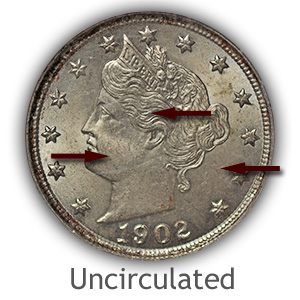
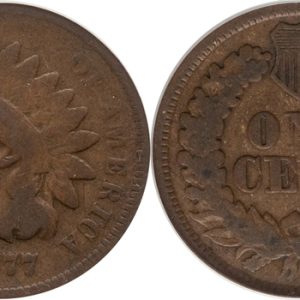
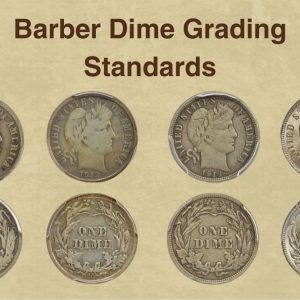
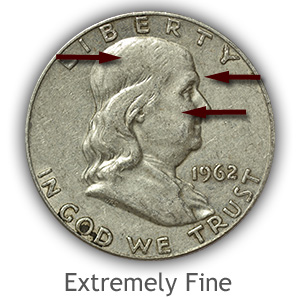
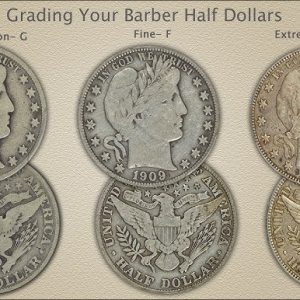
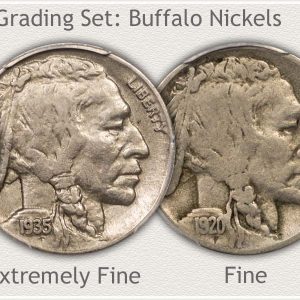
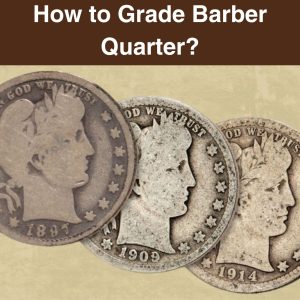
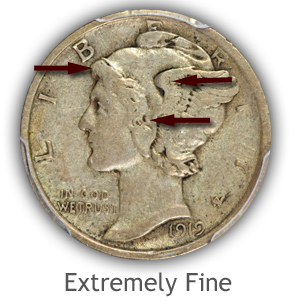

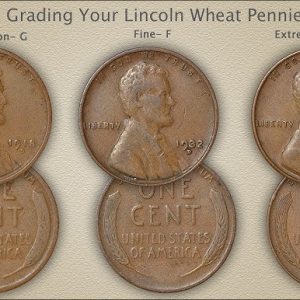
How to determine grade of Morgan silver dollar?
Grading Morgan dollars involves evaluating wear, surface preservation, and strike quality using the Sheldon grading scale (from Poor-1 to Mint State-70). For circulated coins, wear on high points and the clarity of design details are key. For uncirculated coins ( Mint State ), the focus shifts to surface issues like bag marks, hairlines, and luster preservation, with more reflective fields and fewer marks indicating a higher grade.
How much does it cost to grade a Morgan silver dollar?
The cost to get a Morgan silver dollar graded typically ranges from $15 to $45 per coin, depending on the coin’s value and the grading service’s specific tiers. For common-date coins with a value under $500, you can expect to pay around $15 to $23. More valuable coins will have higher fees, with costs increasing to around $35 to $40 or more for coins valued up to $4,000 or $2,500 respectively.
Should I get my Morgan silver dollar graded?
You should definitely consider professional grading for higher-value or potentially higher-grade coins. If you acquire a Morgan Dollar that appears to be in Uncirculated condition (MS-60 or higher) or is a known key date, sending it to a TPG is a wise investment.
How do you get silver dollars graded?
You can get your coins professionally graded by a third-party grading service. There are several reputable grading services that specialize in authenticating and grading coins based on their condition and rarity. Some of the most well-known grading services include: Professional Coin Grading Service (PCGS)